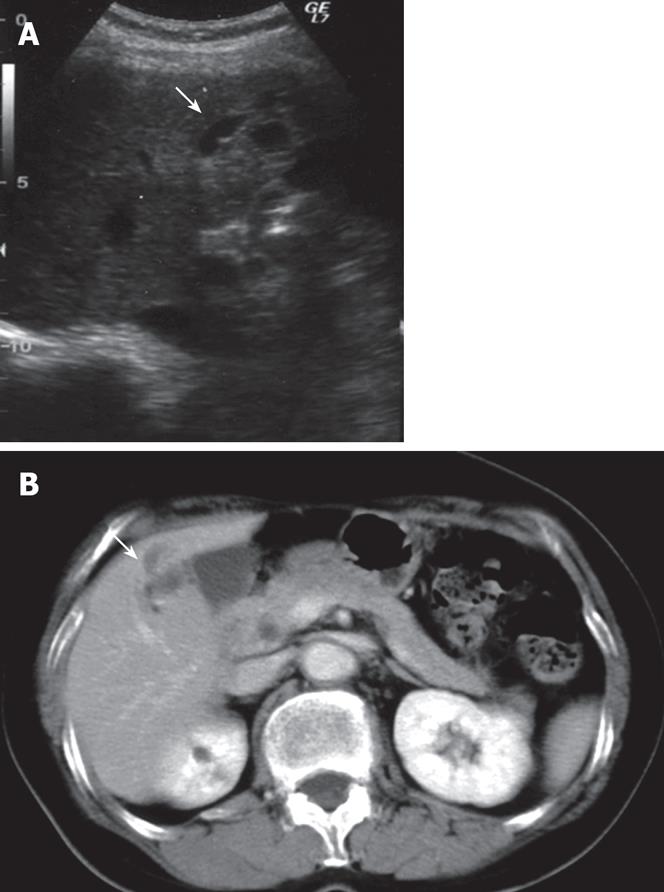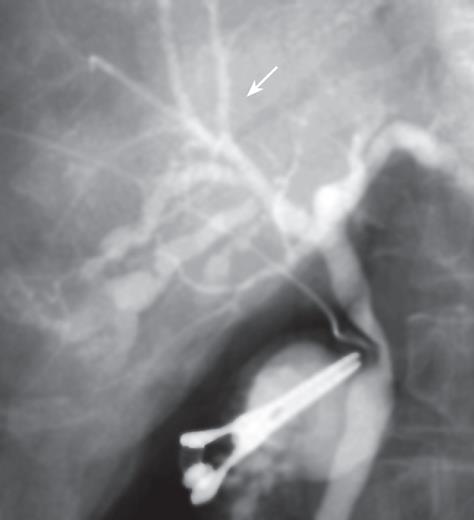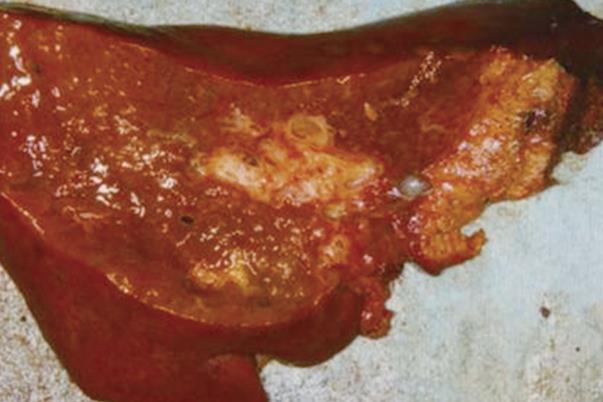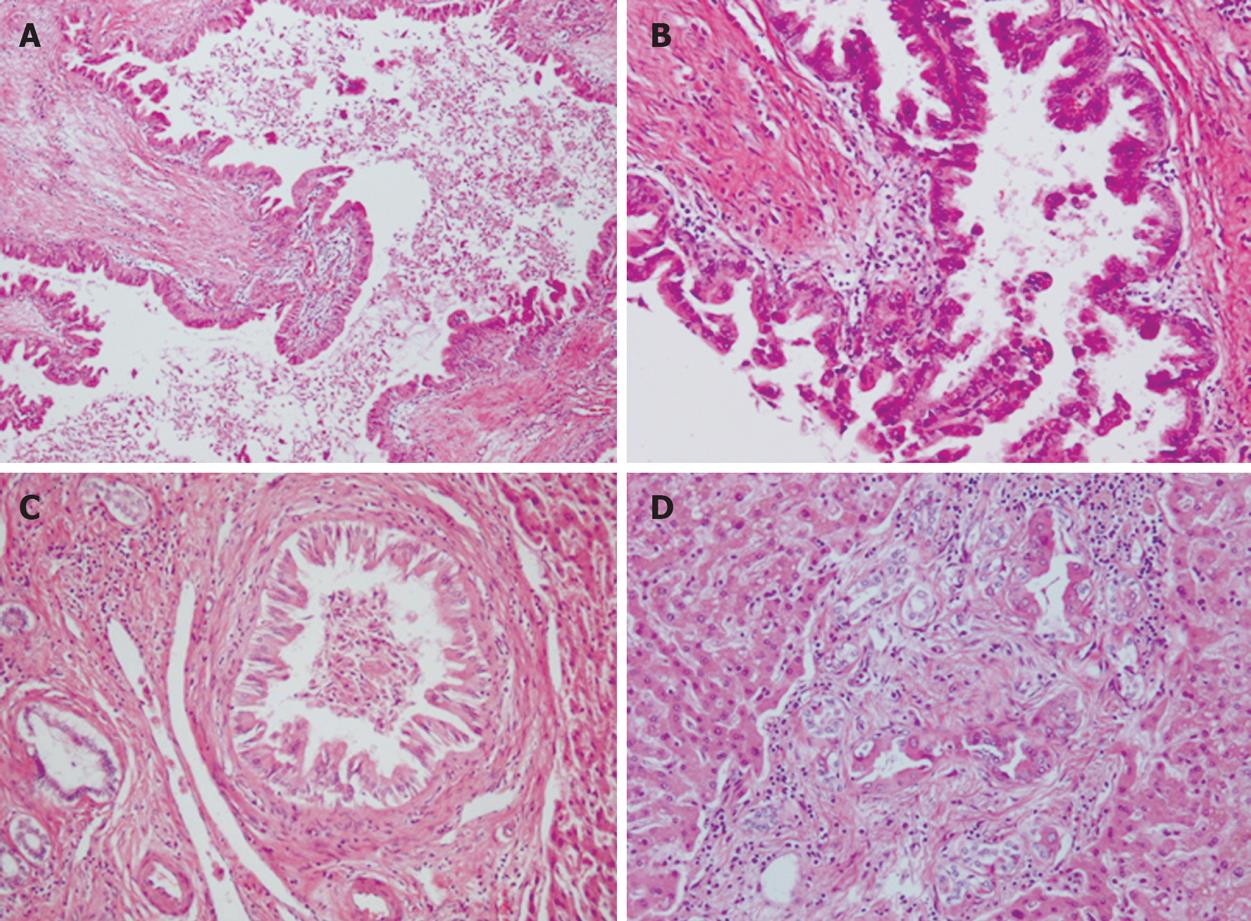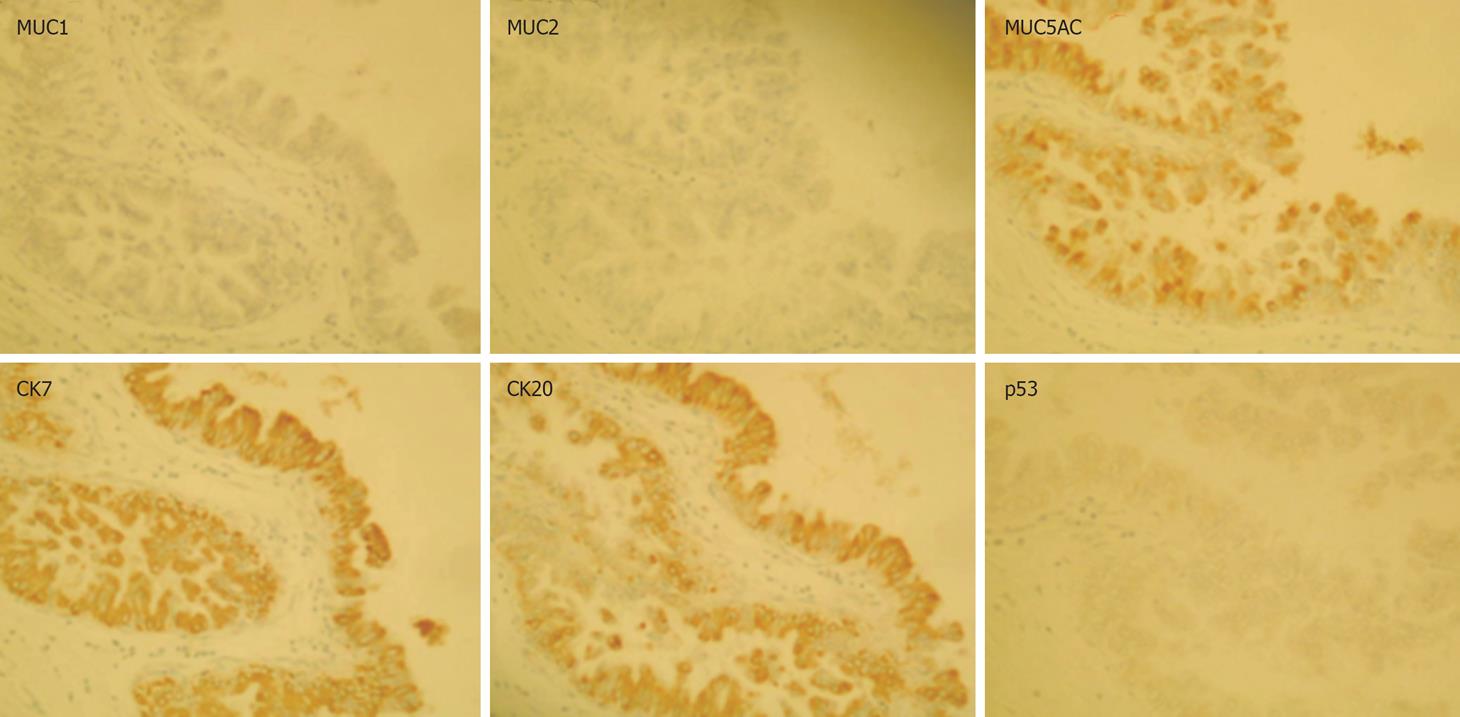Copyright
©2008 The WJG Press and Baishideng.
World J Gastroenterol. Mar 14, 2008; 14(10): 1625-1629
Published online Mar 14, 2008. doi: 10.3748/wjg.14.1625
Published online Mar 14, 2008. doi: 10.3748/wjg.14.1625
Figure 1 A: Abdominal ultrasonography (US) of the liver showing slight dilatation of bile ducts in the right liver (S5); B: Contrast-enhanced CT scan of the abdomen showing markedly dilatation of bile ducts in the liver (S5).
Solid masses were not observed.
Figure 2 Endoscopic retrograde cholangiopancreatography (ERCP) showing a biliary obstruction at the root of the hepatic duct, suggesting cholangiocarcinoma.
Figure 3 Cholangiography showing stricture of the bile duct (B5) and narrowness of bile duct (B8) in the right liver.
Figure 4 Macroscopic appearance of the resected right liver showing dilatation in the stump of the right intrahepatic duct, without a solid tumor component, which is surrounded by a fibrotic area.
Figure 5 Histopathological findings showing.
A: A view of the intrahepatic bile ducts dilated with peri-ductal fibrosis (× 100); B: Carcinoma cells continuously proliferating from the intrahepatic large bile ducts to small bile ducts (× 400); C: Carcinoma cells continuously proliferating from the intrahepatic large bile ducts to small bile ducts (× 200); D: Carcinoma cells in bile ductules around the small portal area (× 200).
Figure 6 Immunohistological staining: MUC5AC, CK7 and CK20 are expressed in the tumor cells, whereas MUC1, MUC2 and p53 are not.
- Citation: Hayashi J, Matsuoka SI, Inami M, Ohshiro S, Ishigami A, Fujikawa H, Miyagawa M, Mimatsu K, Kuboi Y, Kanou H, Oida T, Moriyama M. A case of asymptomatic intraductal papillary neoplasm of the bile duct without hepatolithiasis. World J Gastroenterol 2008; 14(10): 1625-1629
- URL: https://www.wjgnet.com/1007-9327/full/v14/i10/1625.htm
- DOI: https://dx.doi.org/10.3748/wjg.14.1625









